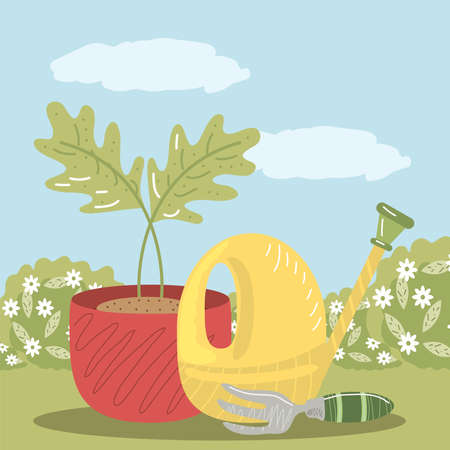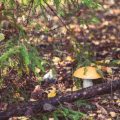Introduction to British Hedgerows
Step into the heart of the British countryside, and you’ll soon find yourself flanked by ancient hedgerows—living boundaries that trace their way across fields, lanes, and meadows. More than mere fences, these tangled thickets are steeped in centuries of rural tradition, shaping landscapes and livelihoods alike. Hedgerows serve as vital wildlife corridors, providing sanctuary for birds, insects, and mammals while protecting crops from wind and soil erosion. But beyond their ecological role, hedgerows hold a hidden bounty: wild fruits, nuts, and berries that have sustained both people and animals through generations. For those with a sharp eye and a spirit for adventure, these living larders offer a chance to reconnect with nature’s cycles and the old ways of foraging. As we journey through Britain’s hedgerows, we’ll uncover not only food but also stories woven into the very fabric of our countryside—a testament to resilience, resourcefulness, and respect for the land.
Essential Foraging Guidelines and Safety
When gathering wild bounty from British hedgerows, it’s crucial to follow certain principles to ensure both personal safety and the continued health of these vital habitats. The British countryside is a living tapestry of tradition, law, and conservation—understanding this landscape will keep your foraging sustainable and respectful.
Key Principles for Hedgerow Foraging
- Take Only What You Need: Leave enough fruit, nuts, and berries behind for wildlife and natural regeneration.
- Proper Identification: Never consume anything unless you are 100% certain of its identity. Many edible species have poisonous lookalikes.
- Minimise Disturbance: Avoid damaging plants or trampling undergrowth. Use scissors or secateurs rather than pulling fruit by hand.
Understanding Local Laws and Access Rights
The UK has specific regulations about wild harvesting, especially on private land or protected sites. The “Four Fs” rule—fruit, foliage, fungi, and flowers—generally allows reasonable personal use from public rights of way, but never uproot plants or disturb nesting birds.
| Legal Aspect | Description |
|---|---|
| Countryside Rights of Way Act 2000 | Permits foraging for personal use along public footpaths; commercial collection is prohibited. |
| Wildlife and Countryside Act 1981 | Protects rare species and prohibits uprooting wild plants without landowner consent. |
| Nature Reserves & SSSIs | No foraging allowed without explicit permission from managing authorities. |
Practical Safety Tips
- Wear Gloves: Hedgerows can be thorny (think bramble or hawthorn) and protect against stings or nettles.
- Avoid Roadside Picking: Fruits near busy roads may be contaminated with pollutants; seek out quieter country lanes or designated footpaths instead.
- Harvest in Season: Choose ripe produce; unripe or overripe fruits can cause digestive upset or simply lack flavour.
- Always Tell Someone: Especially if venturing off the beaten track, let someone know your route and expected return time.
Bearing British Traditions in Mind
The etiquette of the British countryside values discretion and respect. Greet fellow walkers with a nod, keep dogs under control, close gates behind you, and take all litter home. Remember: a good forager leaves no trace except perhaps a lighter basket and a satisfied smile.

3. Common Wild Fruits of the Hedgerow
Britain’s hedgerows are veritable treasure troves for those with a keen eye and a hardy constitution. Among the tangled brambles and hawthorn thickets, you’ll find some of the country’s most iconic wild fruits, each offering a unique taste of the countryside and a link to generations of traditional foraging.
Sloes: The Classic Gin Companion
Sloes, the small, deep-blue fruit of the blackthorn (Prunus spinosa), are perhaps the most famous of all British hedgerow fruits. With their tart, astringent flavour, they’re rarely eaten raw but become legendary when steeped in gin or turned into rich preserves. Sloes ripen in autumn—look for them after the first frost, which helps soften their sharpness. Their bloom-dusted skins and thorny branches make identification straightforward, but always wear gloves; those spines can be unforgiving.
Damsons: Wild Plum Relatives
Damsons are often overlooked in favour of their cultivated cousins, but these small, oval plums pack an intense flavour ideal for jams and crumbles. You’ll find wild damson trees scattered through older hedgerows and woodland edges. The fruits range from dusky blue to almost black, with firm flesh that sweetens as it matures. When harvesting, select ripe damsons that yield slightly under gentle pressure, but be swift—local wildlife is just as keen on this bounty as any human forager.
Wild Plums: Nature’s Forgotten Sweetness
Wild plums thrive in mixed hedges across Britain, especially where old farm boundaries remain untouched. These gems vary greatly in size and colour—from golden yellows to rich reds—and are best picked in late summer to early autumn. A good rule of thumb is to sample one; if it’s mouth-puckeringly sour, let it hang a little longer. Wild plums make excellent stewed desserts or country wines and have been a staple in rural pantries for centuries.
Identifying and Harvesting Safely
For safe foraging, positive identification is paramount—confuse a sloe with something toxic and you’ll regret it. Study leaf shape, fruit arrangement, and habitat before picking anything for your basket. Bring sturdy gloves and long sleeves to ward off thorns, and always leave some fruit behind for birds and other wildlife.
A True Taste of British Tradition
The act of gathering wild sloes, damsons, and plums isn’t just about food; it’s an age-old connection with the land itself. By learning to identify and respectfully harvest these fruits, you’re taking part in a rugged British tradition that rewards patience, knowledge, and respect for nature’s cycles.
4. Nuts and Seeds: Hidden Gems
Amid the thickets and leafy corridors of British hedgerows, nuts and seeds present themselves as understated treasures for the seasoned forager. The native landscape is home to classics such as hazelnuts and sweet chestnuts—robust staples that have sustained rural communities for generations. Knowing when and how to harvest these nutritious finds is crucial for both your own larder and the wellbeing of local wildlife.
Spotlight on Traditional Native Nuts
| Nut/Seed | Prime Foraging Season | Typical Habitat | Key Identification Tips |
|---|---|---|---|
| Hazelnut (Corylus avellana) | Late August – September | Mature hedges, woodland edges | Small, round nuts encased in a leafy husk; look for clusters on low branches |
| Sweet Chestnut (Castanea sativa) | October – November | Mature chestnut trees, parkland, ancient woods | Spiny green casings housing shiny brown nuts; large, serrated leaves nearby |
| Beech Nut (Fagus sylvatica) | September – October | Mature beech stands, woodland margins | Triangular nuts in prickly cases; often carpeting the ground under trees |
Sustainable Gathering: Principles for Preservation
Take Only What You Need: Harvest sparingly, leaving ample supplies for birds, squirrels, and future growth. In British tradition, it’s customary to leave the first and last handful untouched—a small act of respect for the land.
Avoid Damaging Plants: Use hands or simple tools to gently remove ripe nuts without breaking branches or crushing young growth. Remember that many species rely on these resources through autumn and winter.
Top Tips for Foraging Hazelnuts & Sweet Chestnuts
- Timing Matters: Pick only fully ripened nuts—hazelnuts should fall easily from their husks, while chestnuts are best gathered after their spiny cases split open naturally.
- Cure Before Eating: Allow freshly gathered chestnuts to rest in a cool, dry place for several days to sweeten. Hazelnuts can be air-dried to enhance flavour and shelf life.
- Watch for Wildlife: Scan the ground below nut-bearing trees—often the freshest pickings are found where squirrels have missed a stash.
- ID with Confidence: Avoid confusion with inedible or toxic species by consulting a reliable guidebook or joining a local hedgerow walk with experienced foragers.
The Hedgerow Code: Respect Nature’s Bounty
Nuts and seeds may be humble compared to showier fruits but are equally vital in Britain’s wild pantry. Practising restraint and mindfulness ensures these hidden gems will continue to thrive along country lanes for years to come.
5. Wild Berries: Bursting With Flavour
Britain’s hedgerows are a veritable treasure trove of wild berries, each species carrying its own distinct identity and taste, honed by centuries of local tradition and the ever-changing British climate. Learning to recognise, collect, and make good use of these fruits not only deepens your connection to the landscape but also arms you with invaluable survival skills.
Recognising British Wild Berries
The iconic blackberry (Rubus fruticosus) is perhaps the best-known of all. Its thorny brambles wind through every patch of countryside, delivering plump, dark-purple fruit in late summer. Keep an eye out for elderberries (Sambucus nigra) too—small, inky-black clusters hanging from red-stemmed umbels, ready for picking as autumn sets in. Don’t ignore the less obvious: hawthorn berries, sloe berries, and wild raspberries all await the keen-eyed forager.
Top Tips for Safe Collection
- Know your lookalikes: Some wild berries share similarities with toxic species. Always double-check identification—if in doubt, leave it out.
- Harvest responsibly: Take only what you need, leaving enough for wildlife and natural regeneration. Use gloves when necessary to avoid thorns and nettles.
- Avoid roadside hedges: Steer clear of areas near busy roads or treated fields to minimise contamination from pollutants or chemicals.
Utilising Your Hedgerow Haul
Berries collected fresh from British hedgerows can be transformed into an array of traditional treats: blackberry crumble, elderberry cordial, or sloe gin are just the beginning. Many wild berries pack more punch than their cultivated cousins—use them sparingly at first to gauge their tartness and depth of flavour. Remember, proper cooking neutralises any lingering toxins (especially with elderberries), so always process unfamiliar fruits before eating raw.
This practical know-how—identifying, gathering, and preparing wild British berries—isn’t just about food; it’s about self-reliance and making the most of the land’s seasonal bounty. Every hedgerow walk becomes an opportunity to fill your basket and sharpen your wits against the unpredictable English weather.
6. From Hedgerow to Kitchen
Once you’ve braved the brambles and gathered your hedgerow haul, it’s time to transition those wild treasures from basket to British kitchen. Start with a thorough cleaning: tip your bounty into a colander and rinse gently under cold running water, picking out leaves, insects, and debris. For fruits like blackberries or sloes, soak briefly in salted water to encourage any lingering bugs to vacate their hiding spots.
Storing Your Wild Finds
Freshly picked berries and nuts are best used quickly, but if needed, store them in breathable containers—never airtight plastic—to prevent mould. Keep berries in the fridge atop a layer of kitchen towel, while nuts should be air-dried for a few days then stored in paper bags somewhere cool and dry. For longer preservation, consider freezing berries on trays before bagging, or drying nuts for winter use.
Preparing for the Pot
Before cooking, inspect everything again—hedgerow bounty can hide surprises. Remove any stalks or stones from fruits such as damsons or haws. When dealing with crab apples or wild plums, halve them and check for grubs.
Traditional British Recipes
Transform your harvest using time-honoured recipes: simmer blackberries with apples and sugar for a classic crumble; steep sloes with gin and sugar for sloe gin; boil hawthorn berries down into jelly to serve with meat; or roast sweet chestnuts on an open fire for an autumn treat. Even humble elderberries find new life in cordial or rich hedgerow jam. The rewards of careful preparation go beyond flavour—each jar or bottle captures a bit of British countryside resilience. Handle your wild finds with respect and tradition, and let the hedgerow enrich your table as it has for generations.

